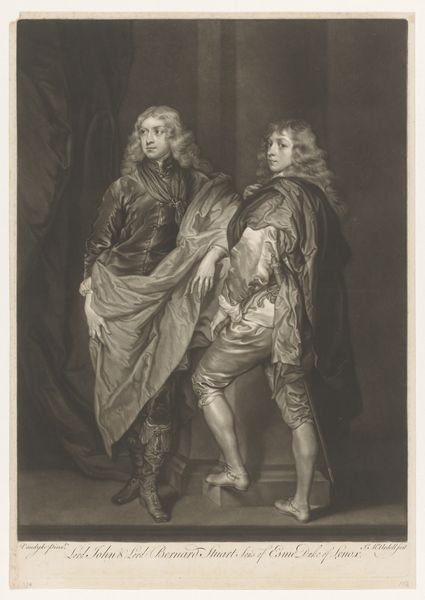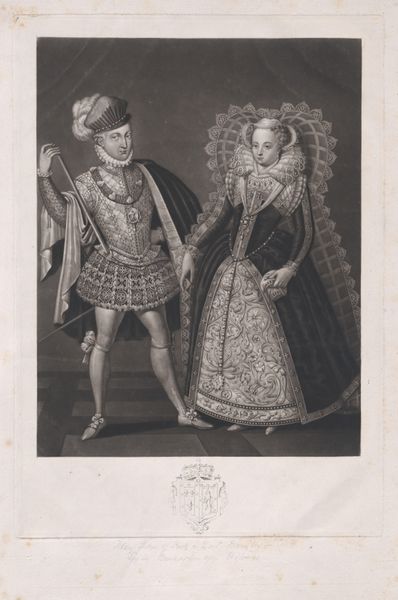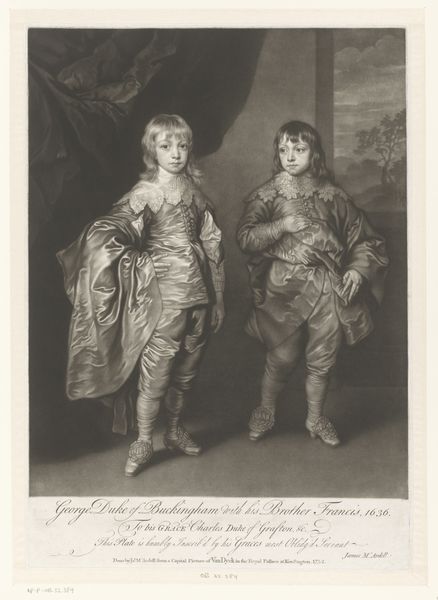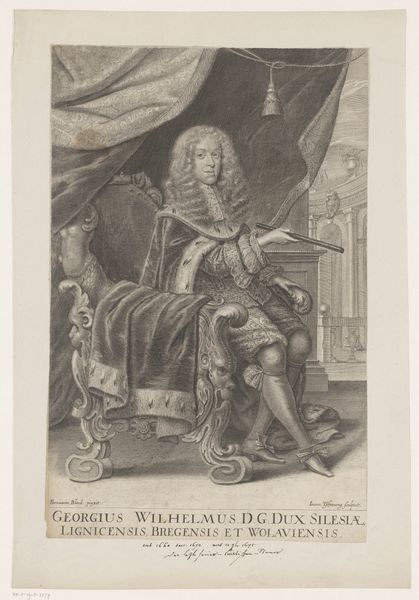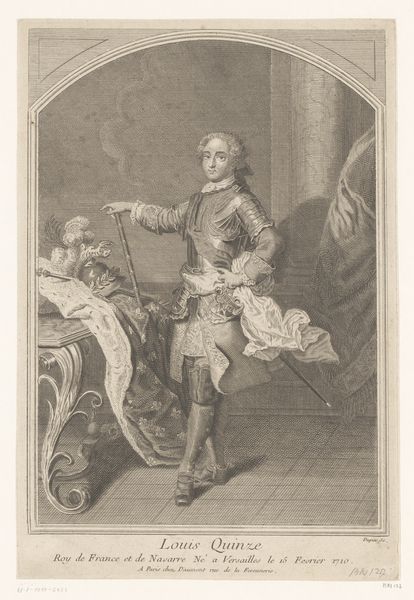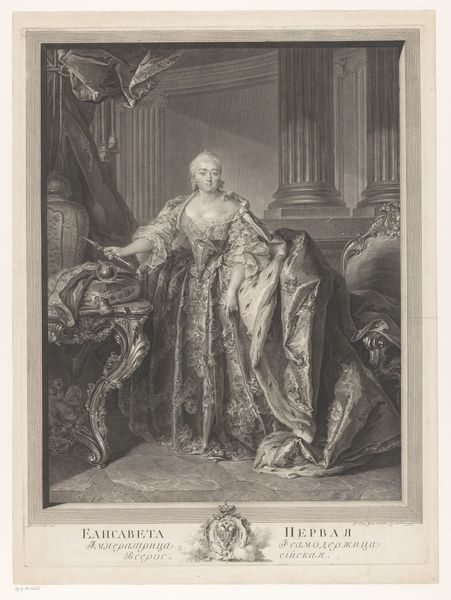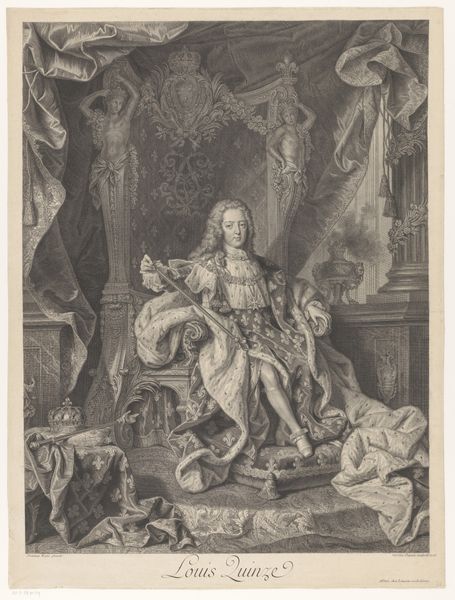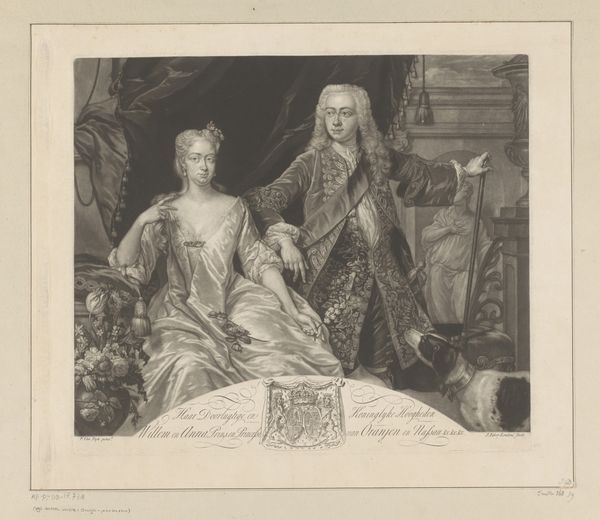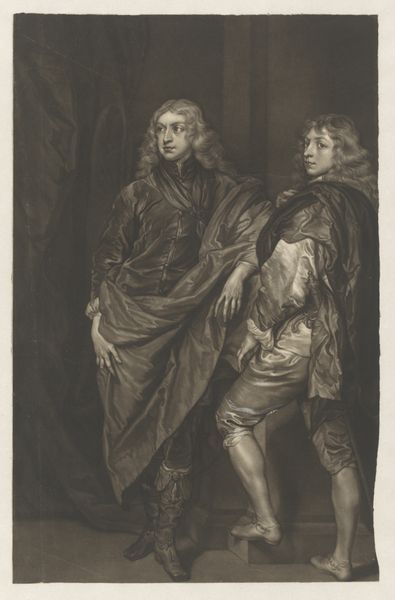
Dimensions: height 655 mm, width 412 mm
Copyright: Rijks Museum: Open Domain
Editor: This is "Portret van George IV en Frederik van York als kinderen", from 1779, an engraving by Valentine Green, held at the Rijksmuseum. There’s a certain stiffness in their postures, though the elaborate clothing looks softer in the print than I’d expect. What strikes you most about this work? Curator: The very materiality of this engraving speaks volumes about 18th-century society. Consider the labor involved: the engraver meticulously translating brushstrokes into lines on a metal plate, enabling mass production. These aren’t simply portraits; they're commodities, carefully crafted and circulated to project power and lineage. How do you think that act of reproduction affected the perception of the royal family? Editor: It must have made them seem more accessible, in a way. Were engravings like this widely distributed? Curator: Precisely. They democratized access, but also standardized the image of royalty. Look at the fabrics rendered – the velvet, the ermine – they signify status, but the engraving process flattens them. There’s a tension between the depiction of luxury and the industrial process of its reproduction, wouldn't you agree? What impact might that have? Editor: That's a good point. Almost like mass-produced 'luxury'. It’s interesting how the handcraft element in the creation gets overshadowed. I hadn’t thought of it that way before. Curator: So we start to consider how materials and the means of production influenced perceptions of class and value, far beyond the individual artistry of the image. It's a question of understanding the artwork as a product of its time, rather than just a representation of it. Editor: I'll definitely think differently about engravings now. Seeing the material production side makes so much sense.
Comments
No comments
Be the first to comment and join the conversation on the ultimate creative platform.
